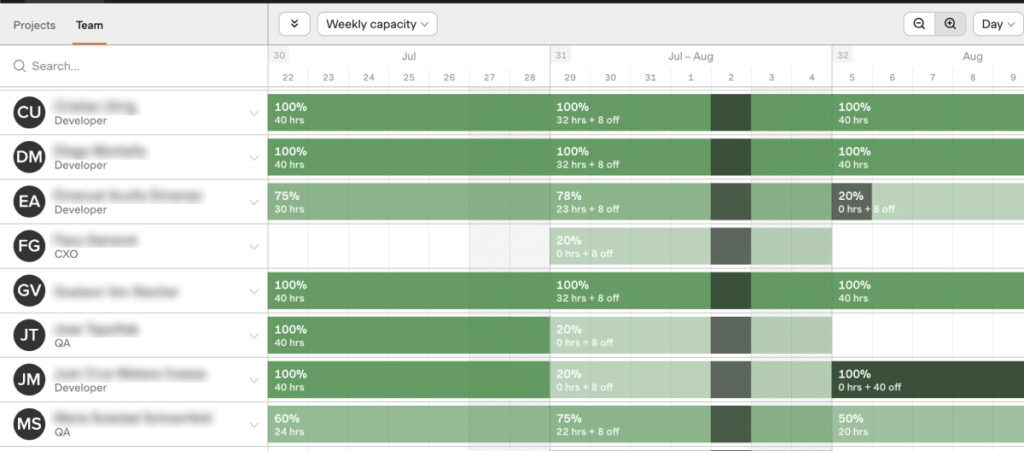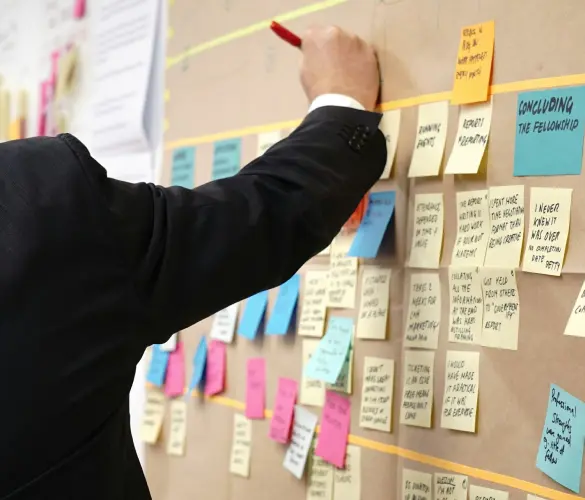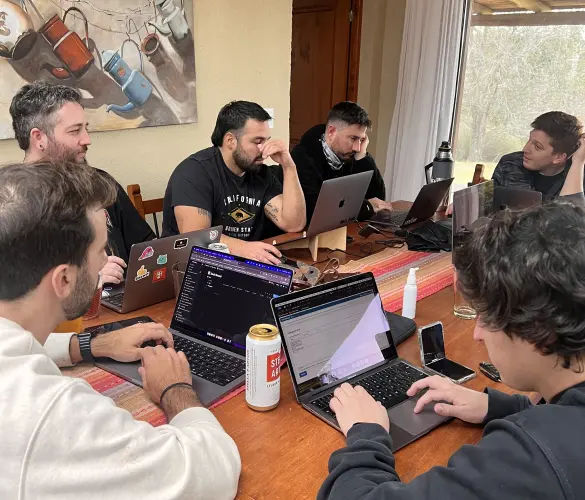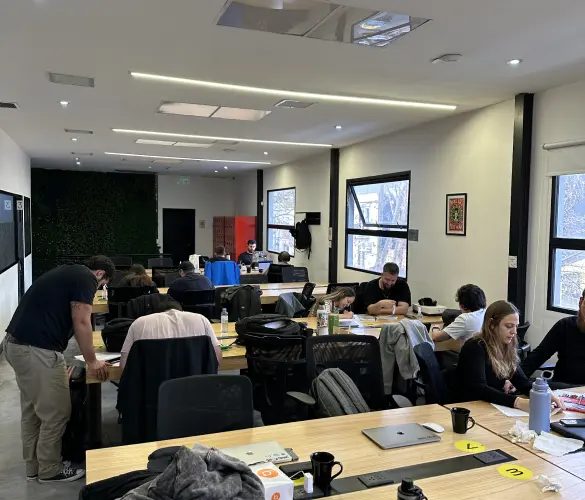At White Canvas we are always managing multiple WordPress development projects simultaneously. As a result, optimizing resource allocation becomes one of our biggest challenges when scheduling, planning deadlines, and communicating with clients.
Losing track of resource allocations can easily lead to uncoordinated teams, progress bottlenecks, and delayed deployments. Falling into these would mean providing clients with a significantly worse experience and final products.
That’s why, in this article, we share the challenges we have encountered when deciding how to allocate our hours, the strategies we have implemented to optimize them, and how these solutions can be useful for other digital agencies.
The Pitfalls of Unoptimized Resource Allocations in WordPress Development Projects
One of our biggest challenges has been the over-allocation of people across multiple projects, which has decreased efficiency and increased stress on the team.
The constant switching between projects generated more errors, delayed task delivery and, in some cases, affected team members’ personal lives.
Additionally, we have faced situations where a lack of resources or incomplete focus on certain projects jeopardized meeting deadlines, which added pressure on both the client and us.
How We Prioritize Resources for WordPress Development Projects
At White Canvas, we prioritize resources based primarily on the project’s deadline since delivering at the time that best suits the client is the most critical factor.
However, we also consider each client’s strategic relevance when allocating developers, quality assurance analysts, and project managers. As a result, we prioritize regular clients or those with high-value projects over other offers.
To a lesser extent, we consider project duration and sometimes choose to complete smaller projects quickly to free up resources for larger projects.
The process of prioritizing which projects should receive which resources begins immediately after closing a sale. We identify the most suitable profiles to work on each project. Then, we use the Forecast app to make mid and long-term projections for assignments and anticipate possible resource overlaps.

This tool allows us to visualize future team availability and adjust workloads as needed.
We Have to Stay Flexible When Projects Change
Projects tend to change over time. For example, a project that originally had a relatively small scope can grow unexpectedly. It doesn’t always happen, but we have to be ready for unexpected changes.
This means we must remain flexible when a project increases in complexity or becomes a priority.
When it happens, we meet with the Operations team to discuss possible action plans and evaluate the best solutions to meet all objectives. This flexibility is key to ensuring that we can react quickly and effectively even if unforeseen events arise.
What “flexibility” looks like probably changes from agency to agency, but for White Canvas, our ability to adapt to changes comes from 2 main factors:
- Our team members can switch projects quickly. Our team members have the skills to tackle different projects on short notice and depending on shifting needs. Urgent projects require immediate attention, while others can be rescheduled or resources can be redistributed accordingly.
- Competency-based management. We align each member’s skills with each project’s requirements. This approach ensures the team members with the most relevant skillset and experience are always available. We also constantly provide training to all members to ensure we are up-to-date and ready for new challenges.
Additionally, continuous communication between project leaders allows the entire team to align with new priorities and adapt quickly to changes.
Additionally, continuous communication between project leaders allows the entire team to align with new priorities and adapt quickly to changes.
The Importance of Continuous Communication
Communication between teams and project leaders is critical to avoid bottlenecks. We have two key mechanisms to ensure effective communication:
- Regular communication. First, project leaders regularly contact each other to resolve issues in real-time.
- Weekly meetings. Second, we hold a weekly meeting with the Operations team to discuss allocations and urgent issues. In these meetings, we also forecast long-term projections.
These meetings allow us to identify problems before they become crises and help maintain a continuous and efficient workflow.
Practical Example: Successful Resource Optimization in Parallel Projects
A clear example of resource allocation optimization occurred when we managed two parallel projects.
In one, we were in the final phase and only had to wait for data input from the customer. At the same time, we had to start a new project as soon as possible to meet deadlines.
The first stage of this new project involved integrations with external applications, followed by the development of custom WordPress blocks for the site.
We coordinated between teams so that one member could take advantage of the first project’s lead time and start the second project’s integrations.
This allowed us to complete the first phase on time, and when the first project’s client finished the data entry process, we were able to resume the project without interruption.
The second phase of the second project was handled by another team member.
In this case, the key was the communication between the project leaders and their teams, which allowed us to ensure that we met the deadlines of both projects without compromising quality.
How to Optimize Resources in Projects: Recommendations for Leaders
In our experience managing multiple simultaneous projects, we have learned that the key to efficient resource allocation lies not only in the tools we use but also in the dynamics of communication and the team’s flexibility in adapting to change.
For those facing similar challenges, we have identified some fundamental practices that have allowed us to manage workload more efficiently without compromising quality or team well-being.
Below, we share three key recommendations for leaders looking to improve resource allocation in concurrent project environments.
Clear and Consistent Communication
Communication between project leaders is crucial to keeping teams in sync and making urgent decisions with sufficient headroom. Being aware of each project’s status allows us to identify problems before they become critical and manage resources more effectively.
This transparency between teams gives us flexibility when unexpected events occur.
Projections and Forward-Planning
Using planning tools such as Forecast gives us clear visibility on future workload, which helps us make informed decisions. These projections allow us to avoid overloading teams and plan work well in advance, detecting possible project overlaps.
Flexibility and Collaboration
It’s critical to be flexible in the face of changes to the project’s priority or complexity.
The ability to reallocate resources quickly and discuss alternatives together has allowed us to meet deadlines without sacrificing the quality of the work or the team’s well-being.
Fostering open collaboration across teams ensures we can make agile decisions and adjust to changes without missing a beat.
Optimizing Resource Allocation Helps Us Deliver High-Quality Projects on Time
Optimizing resource allocation across simultaneous WordPress development projects is a constant challenge at White Canvas.
Through careful planning, flexibility and continuous communication between teams, we have managed these challenges and delivered high-quality projects on time while keeping the team engaged and as stress-free as possible.
However, we understand that this is an evolving process, where we always adjust our strategies and learn from experiences to improve.
We believe the strategies we share here may be useful to other leaders and decision-makers looking to improve the efficiency of their teams in multi-project environments. Hopefully, you found them helpful and can apply them to your projects.
If you found this post useful, read our blog and developer resources for more insights and guides!
Related Articles

Business / 12 min read
Business / 12 min read
How to Take on More WordPress Development Projects While Maintaining Quality
As a digital agency that provides WordPress services, your job is to take on as many projects as possible while maintaining the highest quality. This is easier said than done…
Read More
Business / 9 min read
Business / 9 min read
How to Choose a WordPress Development Agency to Scale Your Projects?
When your agency starts to scale, you may decide that a big part of your expansion will be providing WordPress services. If that's the case but you don't have an…
Read More
Business / 7 min read
Business / 7 min read
How to Optimize Time and Resources in WordPress Projects
WordPress agencies need to optimize and human resources use in order for their services (development, QA, design, etc.) to be profitable. They need to plan these projects very thoroughly to…
Read More
Business / 11 min read
Business / 11 min read
How WordPress Outsourcing Can Help Scale Your Agency
WordPress development outsourcing is becoming more frequent and affordable every day, helping global digital agencies of all sizes scale their services without the long-term investment of hiring an in-house team.…
Read More
Business / 8 min read
Business / 8 min read
What Is a White Label WordPress Development Agency?
A white label WordPress development agency is a company of WordPress developers, QA analysts, and project managers who provide outsourced services to digital agencies that lack a development team. Importantly,…
Read More
